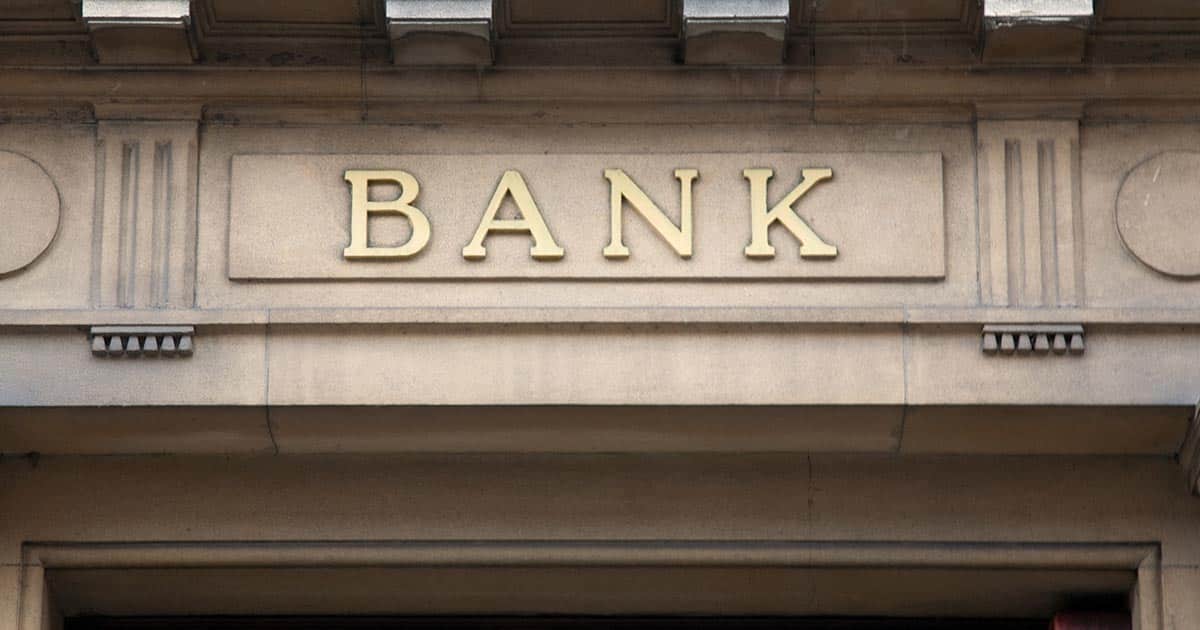
The closing of a bank can impact the gold spot price in several ways. Although the relationship can be somewhat indirect, bank closings can lead to a rise in the price of gold when enough banks close at once or if one bank is large enough to stir uncertainty.
Ways That Bank Closings Impact the Gold Price
Investor Sentiment
One of the biggest risk factors for closed banks is the way they can shape investor sentiment.
When numerous banks close, it tends to foster an attitude of increased risk aversion among investors. This risk aversion is a response to uncertainty in the market.
As investors allocate more capital for safe-haven assets like gold, the price of gold grows. This can also lead to cyclic behavior, wherein the growing price of gold results in a greater frequency of gold purchases, which, in turn, impacts the price of gold.
It should be noted that single bank closures do not always have a noticeable effect on the live spot price of gold.
Weakened Confidence in the Dollar
Bank closures can erode confidence in fiat currency like the dollar. This is especially true when closures happen as a result of economic uncertainty since many investors see gold as a reliable store of wealth. This increased demand for gold also has an impact when enough investors turn to safe haven assets.
How Many Banks Have Closed in the Last 20 Years?
| Year | Number of Bank Closings | Average Gold Price Per Ounce |
| 2023 | 5 | $1940.50 |
| 2022 | 0 | $1800.10 |
| 2021 | 0 | $1798.60 |
| 2020 | 4 | $1887.60 |
| 2019 | 4 | $1514.75 |
| 2018 | 0 | $1279.00 |
| 2017 | 8 | $1302.80 |
| 2016 | 5 | $1141.25 |
| 2015 | 8 | $1060.83 |
| 2014 | 18 | $1183.40 |
| 2013 | 24 | $1205.90 |
| 2012 | 51 | $1675.20 |
| 2011 | 92 | $1568.55 |
| 2010 | 157 | $1421.45 |
| 2009 | 140 | $1097.35 |
| 2008 | 25 | $881.45 |
| 2007 | 3 | $833.70 |
| 2006 | 0 | $636.80 |
| 2005 | 0 | $516.60 |
| 2004 | 4 | $438.10 |
Comparing the gold spot price to the number of bank closings by year, there is a correlation between the two. It may not be a direct cause-and-effect relationship, and if there is a cause-and-effect nature, it is one-sided.
It may be more accurate to draw the conclusion that economic instability itself impacts the gold price and that bank failures are symptomatic of high volatility.
Notable Bank Closings That Precipitated Gold Price Movements
The Great Depression
In the Great Depression, more than 9,000 banks closed. About 4,000 banks closed in 1933 alone and in 1933, the price of gold jumped from just over $20 per ounce to $33 per ounce, representing close to a 60% increase in price. More than $7 billion in depositor assets were lost in these closures, which represented between one third and one half of all financial institutions in the United States. As this was before depositor protections were put in place during the New Deal, banking customers took a collective loss.
The Great Recession
Between 2008 and 2012, the Federal Deposit Insurance Corporation closed 465 failed banks. During the Great Recession, there were fluctuations in the price of gold but overall, it rose by nearly $1,000 from start to finish. There were numerous forces at play but banking woes, impacted by the housing crash, held sway on the economy.
Silicon Valley Bank Closure
The Silicon Valley Bank was the 16th largest financial institution in the United States before its close on March 10, 2023. Gold prices increased moderately following this, despite over 300,000 new jobs reported weeks prior.
While individual bank closings may not always have a direct and immediate impact on the price of gold, they can contribute to broader economic and financial conditions that influence investor sentiment and drive demand for safe-haven assets like gold.




